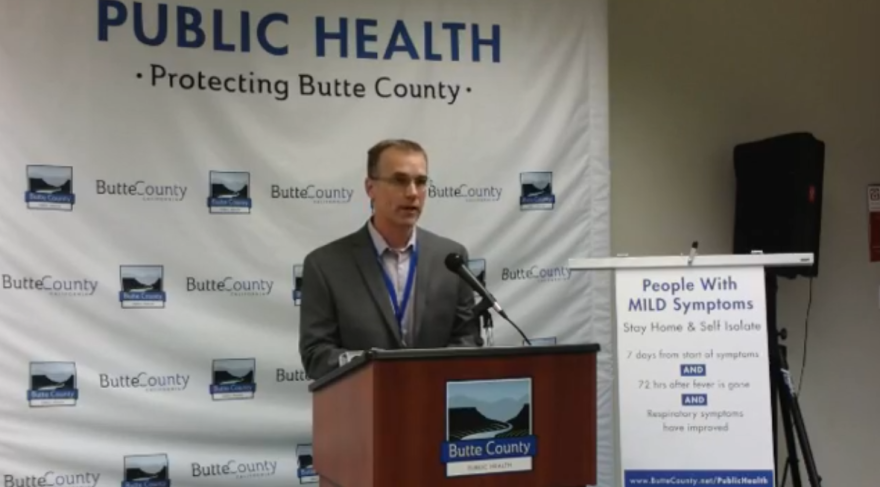On Tuesday, California Gov. Gavin Newsom laid out a plan for how the state might start easing some of its social distancing measures. It includes expanding testing and developing treatments, among other criteria.
We decided to reach out to Butte County’s Public Health Officer, Dr. Andy Miller, to find out where our region’s most populous county is in terms of meeting some of these guideposts. NSPR’s Andre Byik spoke with Miller about testing, herd immunity, flattening the curve and more. Here are highlights from their conversation.
Interview Highlights
On why testing has been slow in Butte County
Testing has been a challenge for us from the beginning because our labs didn't have the equipment and reagents necessary, so we've relied upon the state lab and early on on larger public health labs in other jurisdictions like Sacramento. We are able to test now in Butte County, and the capacity for testing will continue to expand, which is an important and — really as the governor said — really a prerequisite step before we can make many significant changes to the stay-at-home order and to social-distancing recommendations.
The governor has said he doesn’t expect large gatherings to return until we have a vaccine or herd immunity. What is herd immunity?
When outbreaks happen, it's because a contagion like a virus comes into a population that is susceptible to that contagion. And so for instance, when we had measles come into our community around a year ago, even though it's a very contagious virus, the most contagious that we know of, you didn't have hundreds and hundreds of cases and you didn't have this level of concern, because most people have antibodies or immunity to help them to protect them from getting measles. And so, that is herd immunity — the virus cannot rapidly expand through a community because it hits roadblocks in most people that it comes up against and they do not become symptomatic and they are not amplifying the virus in their body and not infecting many others around them. So that is herd immunity. It is the immunity of most people that leads to a virus kind of slowly petering out over time rather than expanding as it goes from susceptible person that then infects more than one susceptible person who then go out and infect others, creating an exponential curve.
On the possibility of a surge in Butte County
I'm just going to say that, you know, when you still have a susceptible population, that is still a possibility. And I think that is why the governor is not going, ‘No, it's not all or nothing. It's not, ‘Hey, you know, it's stay at home and everybody stay in place, or everybody's loose to live the way they used to in the old normal. I think that's why he talks about a new normal, because I think things will have to get back to that old normal slowly and incrementally in order to limit the probability that we will have unacceptable surge in our state and in our county.
This interview has been edited for brevity and clarity. Click the “play” button to listen to the entire interview.





